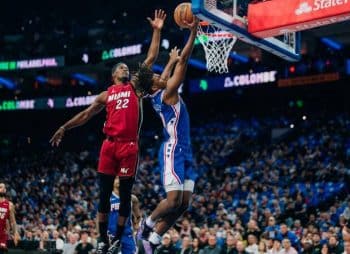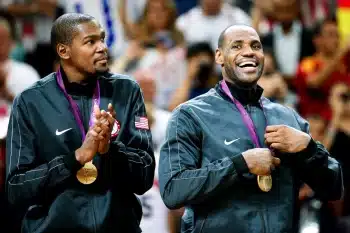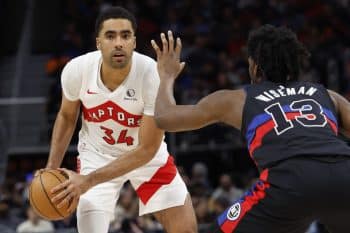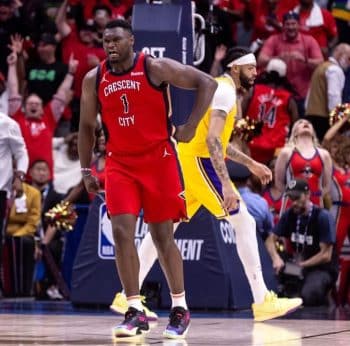NBA
NBA AM: A Viable NBA Consolation Tournament
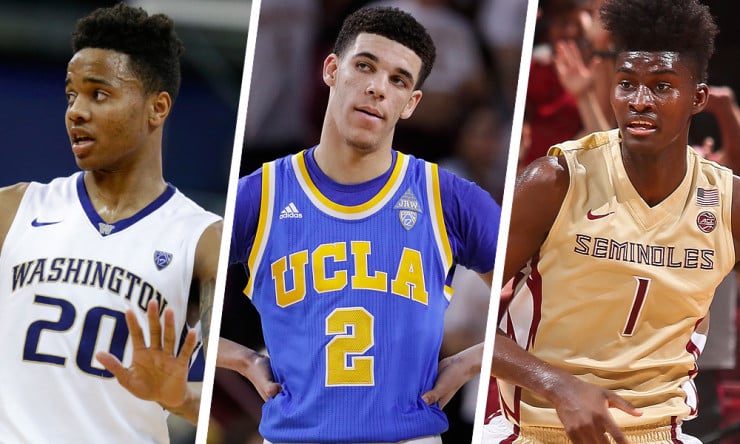
There have been a million ideas to reform the draft lottery in hopes of solving the NBA’s tanking issue, but each seems to create as many problems as it solves. Basketball Insiders publisher Steve Kyler illustrated this problem in relation to a separate issue — the idea of seeding playoff teams one through 16 and eliminating seeding by conference — in another NBA AM piece last month. Today we will present a concept to replace the NBA Draft Lottery system with an NBA Consolation Tournament to determine draft order that avoids some of the problems created by other proposals.
Before we start, below is a tweet from Kyler from last month that illustrates how serious the issue of tanking has become for the NBA.
Heard this alot from agent community this may be the biggest year of teams opting for "tank" route than try for 8th seed than ever before
— Steve Kyler (@stevekylerNBA) July 2, 2017
If player agents think more teams are deliberately setting out to lose games to maximize draft position than ever before, then the time has come to find a solution. The idea of a tournament for NBA teams that miss the playoffs isn’t new. For years, The Ringer’s Bill Simmons has proposed what he calls the “Entertaining As Hell Tournament.” However, his idea is to seed the top 14 playoff teams by record without regard to conference, then have the remaining teams play a single-elimination tournament with the finalists receiving the final two playoff seeds.
While Simmons’ tournament would undoubtedly be entertaining, it would push back the start of the playoffs and add days to the NBA calendar, one of the key issues Kyler mentioned in his piece. HEAT President Pat Riley also proposed a tournament for non-playoff teams in which the tournament winner would claim the top overall pick. Again, Riley’s proposal would be incredibly entertaining, but as we’ll show below, NBA owners have already rejected the idea of increasing the odds of a borderline playoff team winning a high lottery pick.
For purposes of this proposal, we’re going to take Kyler’s seeding arguments as definitive and say that it must remain as is. The 2014 Suns won 48 games but missed the playoffs in the stacked West while the 38-win Hawks made the playoffs in the East. In our proposal, nothing would change about the current seeding system and a similar 48-win team that missed the playoffs would participate in the Consolation Tournament described below.
In October of 2014, the NBA failed to get the 23 votes needed to implement proposed changes to the lottery system. One seemingly-counterintuitive feature would have increased the odds for the lottery team with the most wins to move into the top three of the draft by around 400 percent. This was odd since lottery reform is generally aimed at eliminating incentives to lose games deliberately. Under the league’s proposal, a team like the 48-win Suns of 2014 might miss the playoffs on purpose, given the massive bump in odds to receive a top three draft pick.
“I think we all recognize we need to find the right balance between creating the appropriate incentives on one hand for teams to, of course, win, and on the other hand allowing for appropriate rebuilding and the draft to work as it should in which the worst performing teams get the highest picks in the draft,” NBA Commissioner Adam Silver told ESPN after the lottery reform proposal was voted down by the league’s owners.
And yet, as Grantland reported at the time, increasing the likelihood that a team that barely missed the playoffs would luck into a top three pick was a stated goal of the league’s proposal. It was reportedly defeated in part because a number of owners didn’t like it when the Cavaliers won the top overall pick in three out of four drafts. Upping the odds for a borderline playoff team to win a top pick could have made similar “insta-rebuilds” a more frequent feature of the NBA landscape.
This should never happen. The owners have spoken. So now we’ll introduce our draft reform proposal that eliminates nearly every incentive for teams to deliberately lose games.
In this system, teams that miss the playoffs would be seeded by conference for a Consolation Tournament in a manner similar to playoff seeding. Since there are only 14 teams that miss the playoffs versus 16 that make the playoffs, the top seeds get a bye in the first round. Rather than awarding the tournament winner with the top overall pick — a system that would undoubtedly lead to a team like the aforementioned 48-win Suns receiving a potential superstar — teams would move up one spot in the draft order for each round of the tournament the team wins.
The tournament would consist of a two-game home-and-home series with the winner determined by point aggregation. In other words, it doesn’t matter if each team wins one game. The team that scores the most points combined in the two games will move on to the next round. The top seeds for each conference can only win a total of three rounds by winning the tournament since they receive a bye in the first round. Below is the draft order for non-playoff teams as determined by record with the lottery system eliminated. By way of illustration, let’s say the higher-seeded team wins every round of the tournament, with the HEAT winning three rounds to emerge as champions. Next to the teams is the total number of draft slots they can potentially move up based on the number of rounds the team won.
14. HEAT (+3)
13. Nuggets (+2)
12. Pistons (+2)
11. Hornets (+1)
10. Pelicans (+2)
9. Mavericks (+1)
8. Kings (+1)
7. Knicks (+1)
6. Timberwolves
5. Magic
4. 76ers
3. Lakers
2. Suns
1. Nets
In this example, there’s very little movement since the higher-seeded team won every game. By winning the tournament, the HEAT could potentially move from the 14th pick to the 11th pick since the team won three rounds. However, the Nuggets also won two rounds. In our final order below, the HEAT moves ahead of the Nuggets since we’re also awarding all tie-breaks to the higher-seeded team. As a rule, tie-breaks would go to the team that had the highest point differential for the tournament, with a second tie-break being total points scored.
Final lottery order after tie breaks:
14. Nuggets
13. HEAT
12. Hornets
11. Pistons
10. Mavericks
9. Pelicans
8. Kings
7. Timberwolves
6. Knicks
5. Magic
4. 76ers
3. Lakers
2. Suns
1. Nets
The only way for the HEAT to jump all the way up to the 11th pick would be if the Nuggets, Hornets, and Pistons all lost in the first round. In our example, the Hornets and Pistons were still able to pick ahead of the HEAT since each won at least one round. Where the concept gets more interesting is when you consider a less-predictable scenario. Let’s say the consensus first pick was set to enter the league with hype on the level of LeBron James. The Nets, Suns, Lakers, and 76ers would all be supremely motivated to field the most competitive teams possible since an upset of a higher-seeded team in the first round could allow that team to move up in the draft order. For example, if the Suns — the seventh seed in the West — upset the second-seeded Pelicans in the first round while the Nets lost, Phoenix would move ahead of the Nets in the draft order.
This system would create two types of teams that end up in the lottery — those that miss the playoffs despite their best efforts and those that are rebuilding but never deliberately bottoming out. Those rebuilding teams will always get higher draft picks than teams on the fringes of the playoffs. But a deliberate tank job like the 76ers’ “process” would result in rebuilding teams having little chance to win rounds in the Consolation Tournament, which could cost those teams a chance at a once-in-a-generation player.
Finally, some of the rebuttals to proposals to eliminate conference seeding from Kyler’s piece apply here and must be addressed. Kyler wrote that a tournament would add days to the NBA calendar for lottery teams for which the offseason normally ends sooner. He also argued that pending free agents wouldn’t want to risk injury in a relatively-meaningless tournament to help a team potentially draft a replacement player. And finally, Kyler questioned if television networks and ticket buyers would pay for games that run concurrently with the playoffs.
The answer is that yes, fans and networks would be phenomenally engaged with a tournament built to decide who gets the top picks in the upcoming NBA drafts. In a scenario where a LeBron-level talent was set to enter the league, these games could potentially overshadow the first round of the NBA playoffs. The revenue thus produced would be the league’s primary incentive to implement the Consolation Tournament. Players would get paid out of the additional revenue just as they would from a playoff bonus.
And as for pending free agents fearing injury and being reticent to help a team draft a replacement player, there are two sides to that coin. NBA players pay as much attention to the draft and free agency as anyone. Players such as Magic Johnson have admitted timing their entry to the league to maximize their chance of playing on a preferred team with ideal personnel. Teams could certainly sit players with too much to lose, but most players would relish the opportunity to help their current team improve. If a pending free agent helps a team secure a generational talent with a spectacular run in the Consolation Tournament, that player will have increased their value in free agency and made a strong argument for the current team to keep them.
The NBA needs to end the era of tanking and a postseason tournament for teams that miss the playoffs is the right idea to create new revenue streams for the league and greater engagement for NBA fans. This proposal checks nearly every conceivable box. Teams will still rebuild by necessity, but never again will we see a team deliberately assemble the worst possible product. A postseason for 30 teams rather than the current 16 might seem like overkill, but when the revenue and ratings start pouring in, the NBA will wonder why it didn’t implement the tournament sooner.
